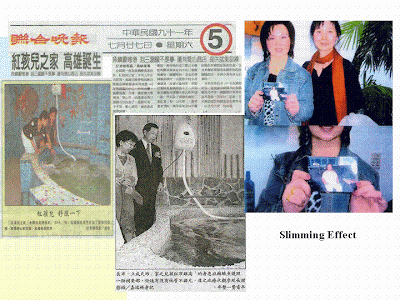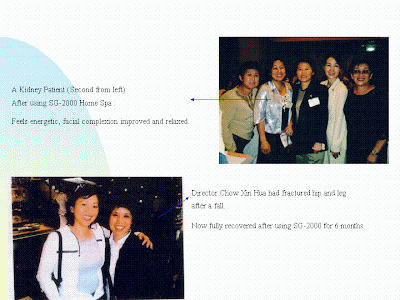In the 17th, 18th, and 19th centuries writings and works on Iris markings and their meanings were recorded, largely by medical practitioners. One of the earliest was Dr. Ignatz von Peczely, a Hungarian doctor. When he was 11 years old, he accidently broke the leg of an owl when it instinctively fought against being captured. The boy noticed a black mark appearing in the owl s iris as victor and captor glared at each other. As von Peczely nursed the owl back to health, and in the following years of a more voluntary relationship, be noticed the mark, which appeared upon injury, changing in form and shading.
Ignatz von Peczely qualified in medicine in 1867 at the Vienna medical College. During his internship he had ample opportunity to study the irides of patients BEFORE and AFTER surgery. He also performed innumerable autopsies and, throughout, researched, systematically, his earlier findings, correlating and extending his knowledge, before publishing his book "Discoveries in the Realms of Nature and Art of Healing", establishing his Iris Chart, in 1880.
Meanwhile, in the 1860’s, a Swedish boy, Nils Liljequist, was reduced from a robust young man, to a sickly boy as a result of vaccination, followed by much drugging with quinine and iodine. Between the ages of 14 and 20, he noted the changes in the colour of his formerly blue eyes, as the drug spots accumulated. In 1870 be published a paper, "Quinine and Iodine change the Colour of the iris". Changing his career pathway from that of allopathic medicine, Liljequist, became a Homoeopath, as that was the treatment, which restored him. After studying many of his patients, he published "Om Ogendiagnosen’ in 1893, which included his Iris chart. Human anatomy being what it is, we should not be surprised that both his chart, and von Peczely’s, were so similar.
Much of the American medical research stemmed from the Austrian emigre, Dr. Henry Edward Lane, who carried out most of his surgical and autopsy correlations with Iride markings, at the Kosmos sanitarium in Evanston, Illonois. His book, lridology. The Diagnosis from the Eye", was published in 1904 as The Scientific Essay for the Public and Medical Profession", and he substanciates his records with the fact that thousands were examined before lust one marking could be considered corroborated".
One of Dr. Lane’s students was Henry Lindlahr, M.D., the champion of "the healing crises". He too, became a surgeon, and amongst his vast written works, placing nature cures onto a scientific basis, in 1919, he published lridiognosis and Other Diagnostic Methods".
The well-known writings of Bernard Jensen, D.C., N.D., Ph.D., stem from his photographic and medically corroborated research. He had studied under Dr. Lindlahr and also worked for two nights a week for four years, at the International School of Professional Arts and Sciences, in San Francisco, California, with the Chiropractor, R.M. McLain, on an intensive study and investigation into using Iridology as a means of analysing patients’ problems. Jensen states, in his book "IRIDOLOGY."
The ce and Practice of the Healing Arts. Volume II’ that "Dr. McLain proved conclusively that iridology was practical and scientific by the beneficial results he achieved with patients".
Dr. J. Haskel Kritzer, recorded his lifetime of research into iris diagnosis, in his textbook "Iridodiagnosis", soon to be republished by The Holistic Health College, London. It was his work which spurred Bernard Jensen onto further research, developing a more up—to—date iris chart, along with a colleague of Dr. Kritzer, Dr. John R. Arnold, founder of the World Iridology Fellowship. Dr. Arnold insisted on the SCIENTIFIC EXACTNESS of any research before it could be considered valid. He was the main instigator in changing the term iridiagnosis’ to ‘iris analysis", which more accurately reflects that it is a means of analysing CONDITIONS WITHIN rather than specific diseases.
D..L. Fernandiz, a medical and naturopathic physician, in Barcelona, Spain, published, in 1970, a comprehensive work, "Iridodiagnosis’, clearly illustrating how valuable early diagnosis was, from the iris, before pathological states advance enough to be clinically diagnosed. He stated that "the great advantage of iridology to medical doctors is its reliability as an indicator of the early stages of disease, allowing many more lives to be saved.’
There are many more researchers who deserve acknowledgement, such as the Germans, Josef Deck, Theodor Kriege, Josef Angerer Dr. H.W. Schimmeland Dr. Rudolf Schnable, to name but a few. There is a great deal of intensive research and writings on Iridology, but we have concentrated here on the MEDICOS. For the benefit of those who have not had a chance to investigate the enormous amount of scientific research, involving millions of case histories, worldwide research, utilizing surgery, autopsy, X-ray, scanning and chemical analysis, in Russia, Germany, New Zealand, Australia, Canada, America, South America and Europe, we trust this synopsis will clarify matters on the optic-neuro reflexed information provided by over 2800 exposed nerve endings. Just as the vascular system, exposed in the posterior of the inner eye is most revealing, so are the autonomic and central nerve system exposures.
Today, Iridology is part of the curriculum in the medical schools in Moscow, the Bobigy Faculty of Medicine at the University of Paris Nord, and various Egyptian and Greek medical schools. It is used worldwide by natural medicine practitioners and we have even more extensive scientific resources for the ever continuing corroboration of our findings.
















































